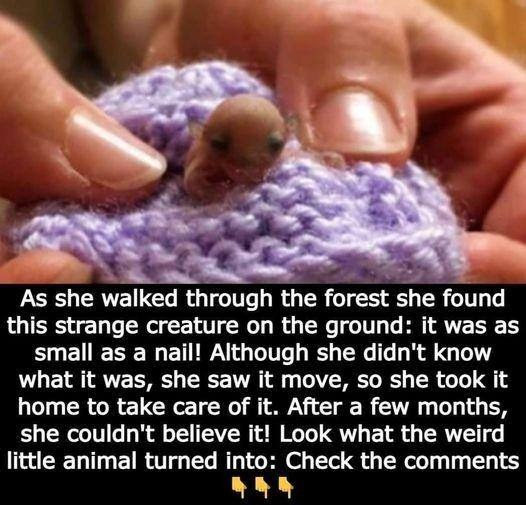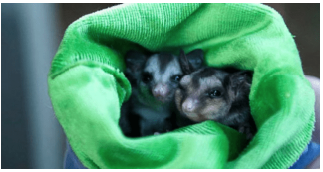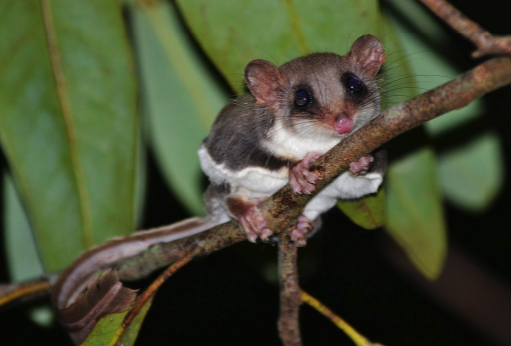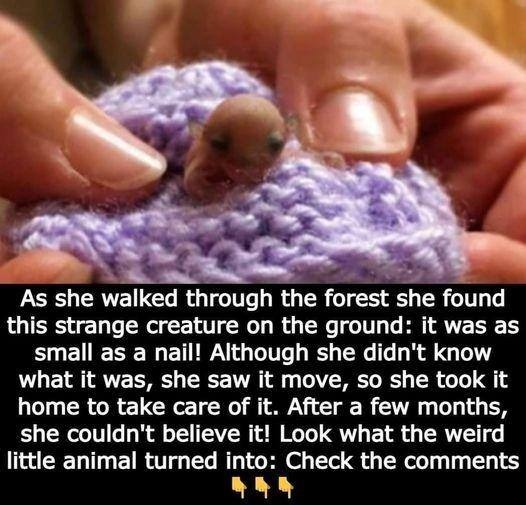A baby feathertail glider named Boop is the tiniest animal at the Australia Zoo Wildlife Warriors.
A baby animal named Boop is the cutest thing ever.
The little creature, who weighed less than one gram after fleeing her mother’s pouch, was discovered.
Before Boop is released back into the wild, the wildlife refuge ensures she receives the best care possible.
These magnificent local animals get their name from their unusual flat tail, which is covered in stiff fringed hair that grows horizontally on either side all the way to the tip. As they go through the trees, the tail is employed for steering and braking.
The only mammal with what seems to be a feathered tail is this one. The tail is 7-8 cm long and resembles a feather of a bird.

This little glider, which weighs just 10-15 grams as an adult, is how WIRES gets involved since it occasionally avoids detection when in danger or is mistaken for a mouse when the cat brings it inside.
The Burramyidae family includes feathertail gliders, which are related to pygmy possums. Because of their small size, which makes it difficult for them to stay warm in cold weather or when food is in insufficient supply, some little mammals, like the Sugar glider, enter a state known as torpor.
The animal’s breathing slows down as a result, they momentarily lose consciousness, and their body temperature decreases to that of the surrounding area. This should not be confused with hibernation, which lasts far longer and is not known to occur in marsupials.
The fur is a blend of grey and brown and is light cream to the white abdomen above the waist. Feathertail gliders have a skin fold that runs from the elbow to the knee and acts as the gliding membrane, just like other gliders. To increase the size of the body surface, long hair is fringed at the border. The glider may cover large distances when spread out, much like a falling leaf. It lives in trees and subsists on insects, pollen, and nectar. When it needs to move from one tree to another, it uses the air.

When they leap off the tree with their legs extended, the skin flap between their front and hind foot spreads like a parachute. This little possum’s flattened tail aids in its ability to glide, turn, brake, and anchor as it lands.
They normally glide for 14 meters, while they have been reported to go up to 28 meters. There is a maximum of five glides each hour. Feathertail gliders use gliding to stay above the treetops and evade larger, ground-dwelling predators.
The feet resemble those of a frog, but instead of scales, they have fur. They can climb nearly anything thanks to the large pads on their toes that have serrated groves underneath. Because of the numerous sweat glands on the footpads, the small glider can actually climb even vertical glass panes using surface tension, which functions as tiny suction cups.
They can be found in all of eastern Australia, from far north Queensland to South Australia.

By lining their nests with leaves, feathers, and shredded bark, these gliders may build their homes anywhere, including old bird nests and banana sacks. The nest is spherical and has a diameter of 6–8 cm. Palm, staghorn, and tree fern nesting locations are common.
They live in communal groups of 5 to 30 people in the country’s north and reproduce all year; in the south, they do so in the spring, summer, and late winter.
In the wild, they survive for four years. Both sexes have practically the same size and appearance, with the exception of the female’s pouch.


